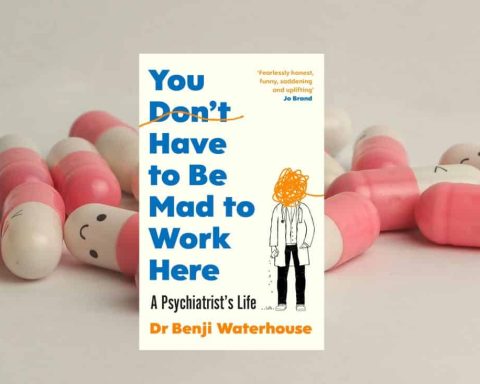
Daniel Kahneman, the Israeli-American psychologist, economist and Professor Emeritus of psychology and public affairs at Princeton University, recently passed away at the age of 90.1 Known for his work on hedonism, decision-making, and the psychology of judgment, Kahneman was also recognised for his contribution to behavioural economics – he shared the 2002 Nobel Memorial Prize in Economic Sciences with Vernon L Smith, and subsequently became known as the “…grandfather of behavioural economics.” I will briefly review one of Kahneman’s most celebrated works, and highlight how some of its major findings are relevant to general practice.
For many, Kahneman is most recognisable for his 2011 best-selling book, Thinking, Fast and Slow. This summarises much of his research, and explores the cognitive processes that shape human decision-making. In this work, Kahneman introduces the concept of two distinct systems that drive the way we think: System 1 (fast, intuitive, and emotional) and System 2 (slow, deliberative, and logical). He argues that an insight into this dual-process theory is crucial for understanding how individuals make decisions under a variety of conditions. System 1 operates automatically and rapidly, with little or no effort and no sense of voluntary control. While this can be advantageous in emergency scenarios where near-immediate decisions are often required, this system is also more susceptible to and can be easily duped by innate cognitive biases. Concurrently, System 2 is a more careful and deliberative process which allocates attention to effortful cognitive activities, and is activated when we must focus on complex problems or when decision-making requires sustained attentive focus.
These innate human biases can significantly impact our decision-making, including those of general practitioners.
Thinking, Fast and Slow also explores Kahneman’s research on cognitive biases and heuristics, such as the availability heuristic, the representativeness heuristic, and anchoring. These innate human biases can significantly impact our decision-making, including those of general practitioners. For example, the availability heuristic might lead a GP to diagnose a more common illness rather than one that is rarer but more fitting of the clinical picture, simply because the symptoms are similar and the commoner illness more readily presents itself in the clinician’s mind. Similarly, the anchoring effect, in which individuals rely too heavily on the first piece of information they discover, might cause the GP to be overly influenced by the first symptoms reported by the patient, by the initial examination findings, or by the first investigation results, and erroneously misinform subsequent clinical decision-making by overlooking subsequent information that might point to an alternative diagnosis. By being aware of their innate human biases and tendency to be influenced by heuristics, Kahneman argues that individuals can mitigate against the potential negative effects of these evolved and largely helpful processes. In the context of general practice, the clinician harbouring such awareness might promote objectivity and clinical vigilance by deploying strategies such as seeking second opinions, harnessing algorithmic decision aids, and engaging in active structured reflection. Such interventions attempt to maintain professional humility through an appreciation of the fallibility of even the most experienced GPs to minimise the potential and unintended harms of their innate suite of cognitive biases and heuristics.
The book also discusses the concept of ‘loss aversion,’ which describes the tendency to feel the pain of a loss more powerfully than the pleasure experienced by an equivalent gain. In a clinical context, this might influence how GPs explain management options to their patients, particularly if an option has both a 50% chance of success and a 50% chance of failure. The work also explores framing effects, the insight that the manner in which information is presented can drastically influence subsequent decisions and perceptions that are formulated by that information. For example, a 95% chance of survival is often interpreted as more favourable than a 5% chance of dying, despite each figure representing the same risk. This has clear ethical implications regarding patient autonomy in addition to potential impacts on patient health outcomes. An understanding of loss aversion and framing effects could help GPs when discussing potential treatment options to promote informed patient decision-making that is founded on balanced and transparent information rather than a disproportionate fear of negative outcomes.
Thinking, Fast and Slow is a detailed summary of much of Kahneman’s influential work spanning numerous academic disciplines which has real-world impact across various professional and personal domains. Its relevance to general practice, and the medical profession more broadly, is undeniable and profound. GPs would benefit from sitting with this book and contemplating how its insights might be harnessed to improve their own clinical practice, and even their approach to decision-making in other domains of life.
Featured Book: Daniel Kahneman. Thinking, Fast and Slow. Penguin, 2012. ISBN 9780141033570, Paperback, £14.99
Reference
- Guardian staff and Agencies. Daniel Kahneman, renowned psychologist and Nobel prize winner, dies at 90. The Guardian 28 March 2024. https://www.theguardian.com/science/2024/mar/28/daniel-kahneman-death-age-90-psychologist-nobel-prize-winner-bio [accessed 16 April 2024]
Featured Photo by Marc-Olivier Jodoin on Unsplash









This is definitely a classic, although it’s quite densely written, and focuses on the deficiencies of fast thinking. The decisive moment: how the brain makes up its mind by Jonah Lehrer is a great book to read alongside Kahneman, and is more balanced and a bit of an easier read.